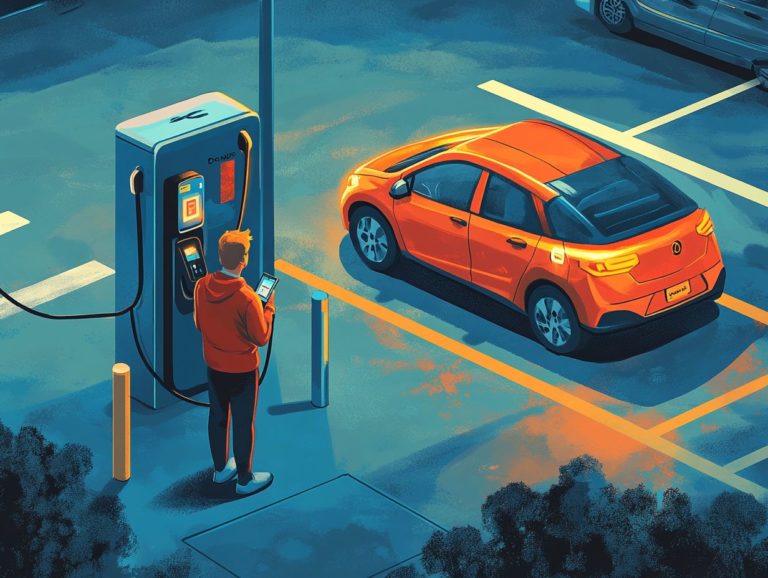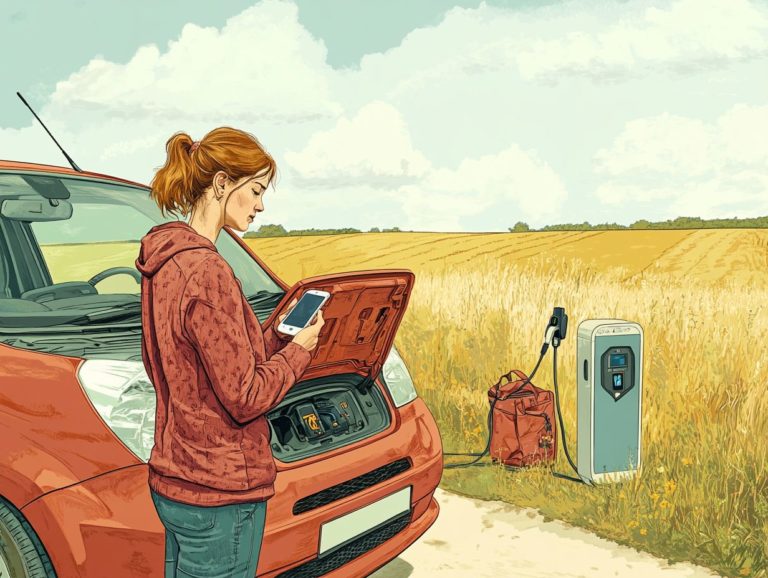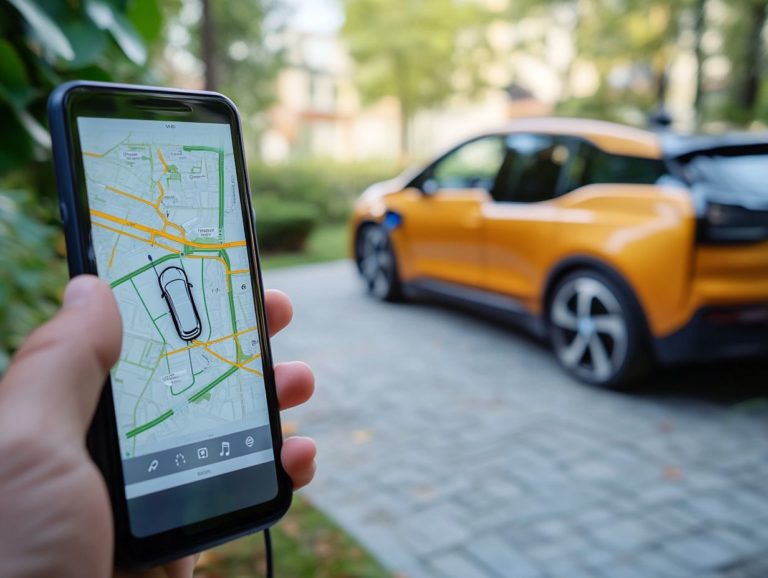How Do I Read an EV Charging Station Map?
Navigating the realm of electric vehicles (EVs) may seem overwhelming, particularly when it comes to charging.
Grasping the intricacies of EV charging station maps is crucial for any EV owner who wishes to travel with confidence. This article delves into what these maps entail, their significance, and the various types of charging stations available.
You ll also find a step-by-step guide on how to utilize these maps effectively. Along with insightful tips, this will ensure your charging experience is both seamless and efficient.
Whether you’re a seasoned EV enthusiast or just beginning your journey, this guide is tailored to meet your needs.
Contents
Key Takeaways:
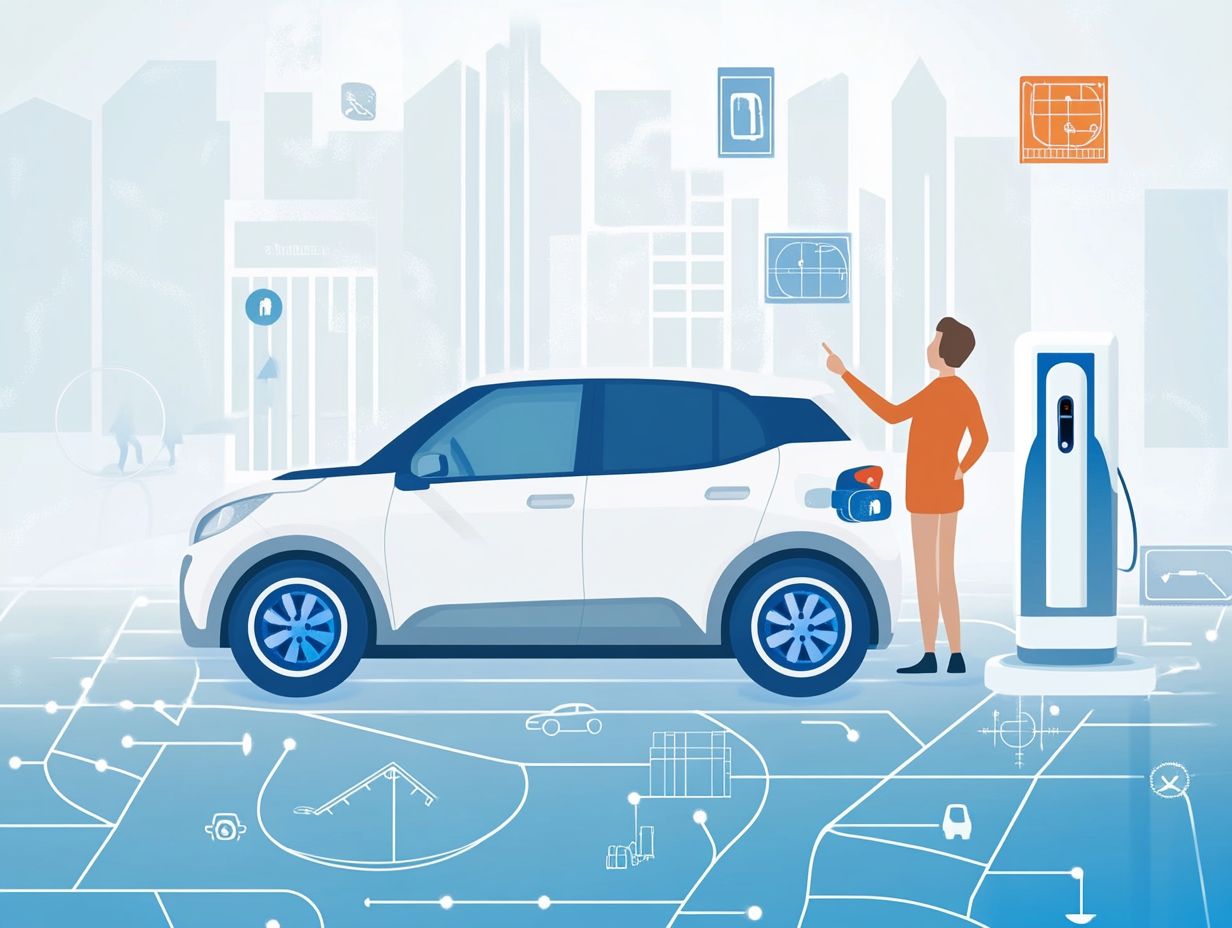
- Use EV charging station maps to locate charging stations for your electric vehicle.
- Different types of charging stations (level 1, 2, and 3) offer varying speeds and require different adapters, so it’s important to understand which type you need.
- Before using a charging station, plan ahead, know the charging process, and have a backup plan if the station is unavailable.
Understanding EV Charging Station Maps
Understanding EV charging station maps is essential for anyone traveling with electric vehicles (EVs). These maps provide vital information about the locations, availability, and specifications of charging stations, as well as how to assess EV charging availability.
Using interactive resources helps you plan efficient road trips. This ensures you always have access to charging options when needed.
Tools like Google Maps, enhanced by user reviews, provide detailed descriptions and real-time availability of chargers. This not only makes your driving experience smoother and more sustainable, but also allows you to consider energy consumption and charging speeds along your journey.
What are EV Charging Station Maps?
EV Charging Station Maps are invaluable digital tools crafted to help you locate charging stations with remarkable efficiency.
These interactive maps not only mark the locations of public chargers but also deliver essential details such as the types of charging connectors available and real-time station availability. You can filter options based on charging speed, nearby amenities, and even user reviews.
With features like route planning that seamlessly integrate charging stops, these tools significantly enhance your overall EV driving experience. They allow you to manage your journeys and recharge effortlessly along the way.
Consequently, they play a pivotal role in expanding EV charging infrastructure, ensuring that you have seamless and accessible charging solutions no matter where your travels take you.
Why are they Important?
The importance of EV Charging Station Maps is that they make travel planning easier. They put vital charging information right at your fingertips.
By incorporating real-time data on energy consumption and the availability of charging stations, these maps significantly enhance your overall experience during road trips.
Planning your charging stops effectively becomes crucial. This allows you to minimize downtime and maintain your energy levels with ease.
When you re well-informed about the charging infrastructure along your route, you can manage your time and resources more effectively. This leads to a more enjoyable journey.
This foresight alleviates the stress of unexpected delays and enables you to choose the optimal route based on your battery range and charging needs.
Types of EV Charging Stations
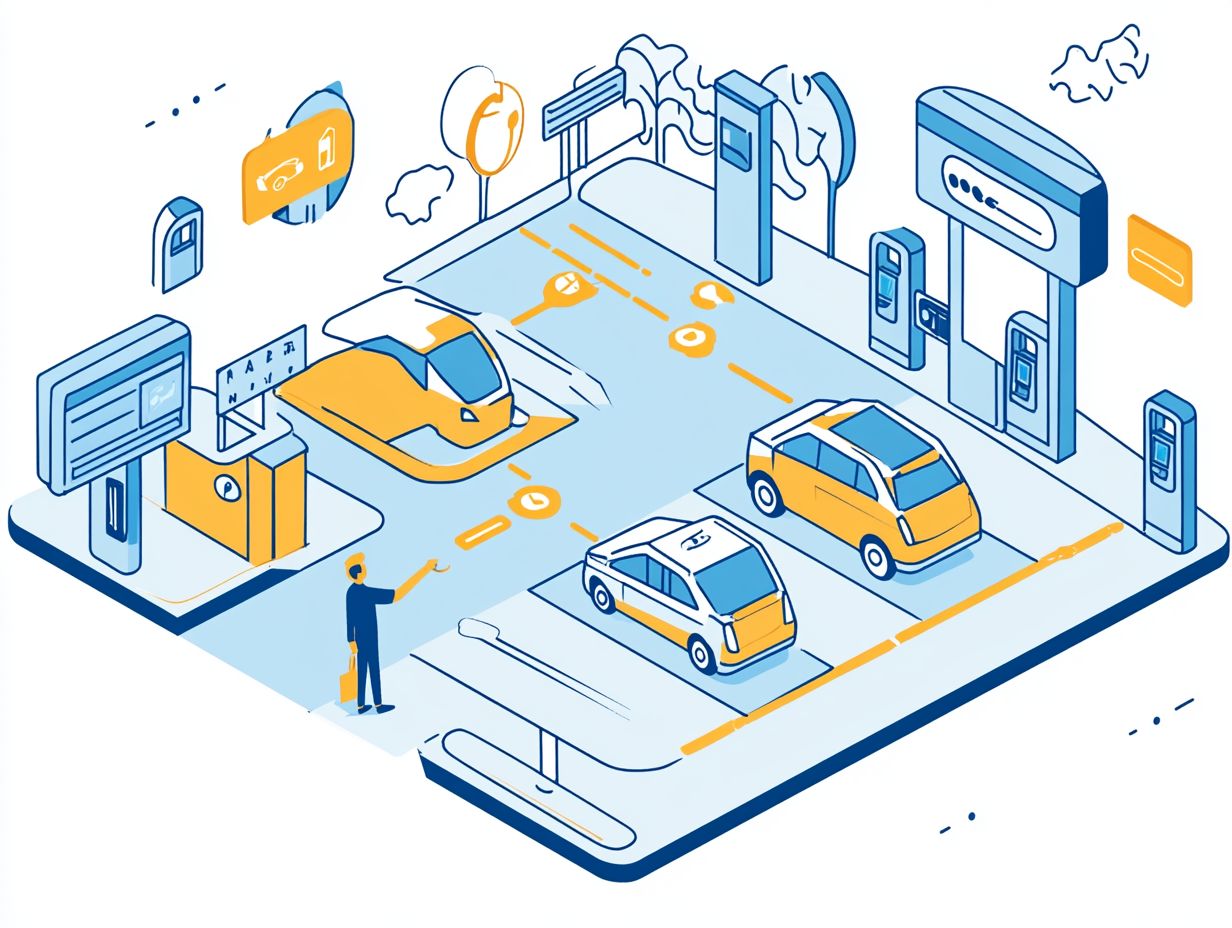
Types of EV charging stations are categorized into Level 1, Level 2, and Level 3. Each level is designed for different charging speeds and energy needs tailored specifically for electric vehicles (EVs). Understanding these distinctions is essential for selecting the appropriate charging port based on your travel requirements and time constraints.
Level 1 chargers are the slowest and are often found in residential settings. Level 2 chargers are more prevalent in public spaces. Level 3 chargers, or DC fast chargers, offer rapid charging solutions, ideal for long-distance road trips.
This knowledge will supercharge your EV journey!
Level 1, 2, and 3 Charging
Level 1, Level 2, and Level 3 charging represent the options available for electric vehicles, each varying in speed and infrastructure requirements. Each level caters to your unique driving scenarios.
Level 1 charging, which typically uses a standard household outlet, is perfect for overnight charging at home. It offers a slow but steady power supply, ideal for your daily commutes.
On the other hand, Level 2 charging is faster and commonly found at public charging stations and workplaces. This makes it convenient for times when you need to recharge during breaks or while running errands.
Then there’s Level 3 charging, also known as DC fast charging. This option drastically reduces your wait times, especially beneficial for long-distance travelers who need a quick refuel.
Understanding these different charging types is crucial for maximizing your experience as you navigate the evolving landscape of electric mobility.
How to Use an EV Charging Station Map
To make the most of an EV Charging Station Map, familiarize yourself with its features. You can also discover how to find free EV charging stations, learn how to filter charging information, pinpoint nearby chargers, and read user reviews.
Mastering these elements can significantly elevate your travel experience and resources.
Step-by-Step Guide
A step-by-step guide to using an EV Charging Station Map can enhance your travel planning. It enables you to effortlessly locate nearby charging stations.
These interactive maps enhance your electric vehicle experience, simplifying the process of finding the perfect charging stations tailored to your needs. To get started, access the map through your preferred website or mobile app. From there, you can easily zoom in on your current location or enter a desired destination.
Utilizing filters such as the type of charging plug or the station’s availability allows you to refine your options. By incorporating these stations into your planned travel routes, you can ensure a seamless journey, free from the anxiety of running low on battery.
Mastering the Art of Finding Charging Stations
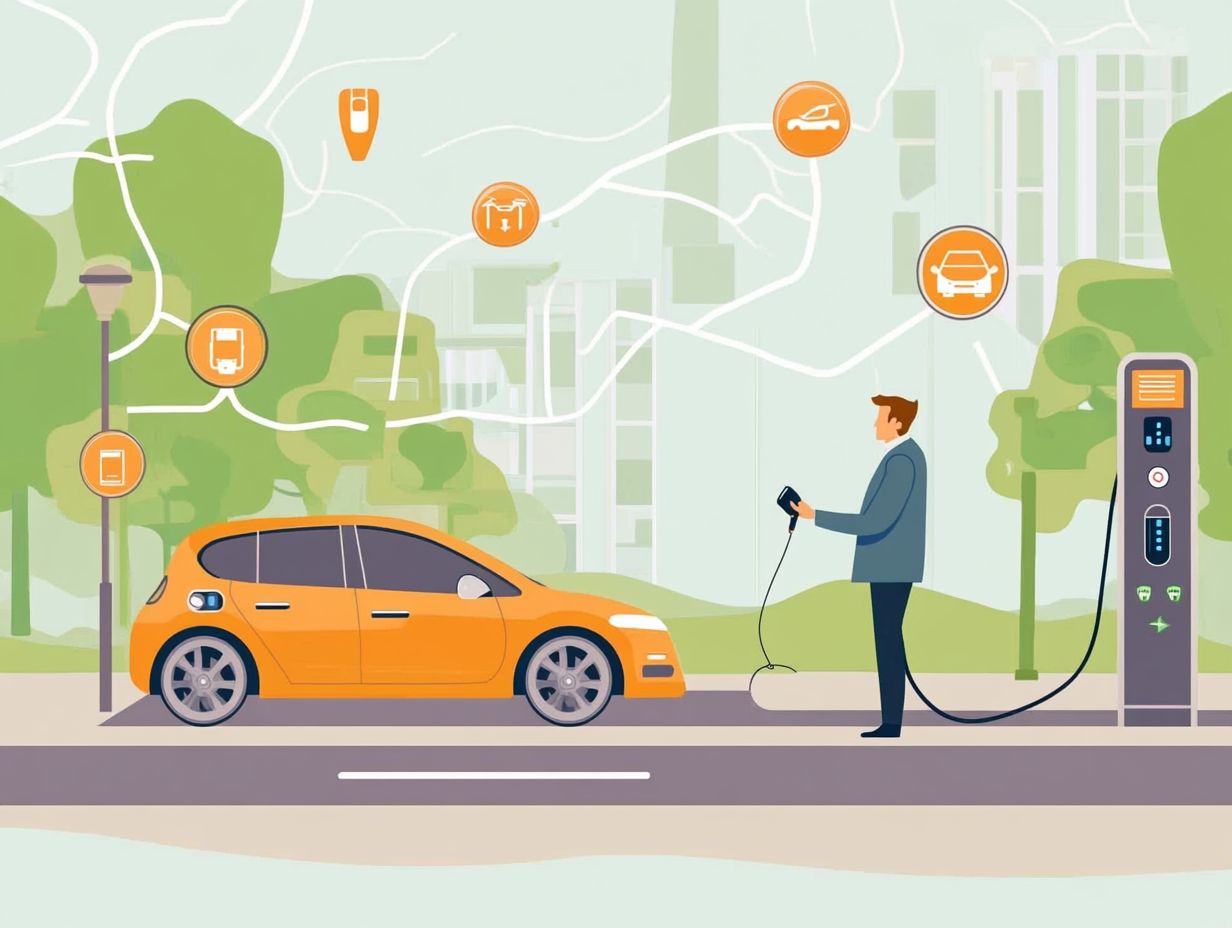
Finding and utilizing charging stations effectively requires adopting strategic approaches for efficient charging. Understand how to plan your charging stops and leverage the experiences of other users.
This approach allows you to make informed decisions that enhance your travel planning and ensure a smooth journey.
Strategies for Efficient Charging
Strategies for efficient charging are essential for you as an electric vehicle user. They allow you to optimize your charging sessions and manage your energy consumption.
Focus on key aspects like charging during off-peak hours when electricity rates are lower. Also, select optimal locations with accessible charging stations to enhance your overall experience.
Understanding map-based charging information is crucial. It helps you pinpoint stations that provide fast charging and are also less crowded. This insight leads to a smoother journey, minimizing wait times and maximizing your driving time.
Consider local charging incentives. They can add extra value to your experience, making it even more rewarding while promoting sustainable energy management.
Don’t let your battery run low plan your stops in advance to keep your journey smooth!
Common Challenges and Solutions
Electric vehicle users face several common challenges. Informed travel planning and attention to user reviews can help.
For instance, many travelers grapple with lengthy wait times at charging stations. This often occurs due to high demand or malfunctioning equipment, disrupting even the most carefully crafted itineraries.
To navigate this inconvenience, identify alternative charging options along your route. Consider options provided by local businesses or community centers.
Utilizing real-time apps that display station availability can save you both time and frustration. Plan your trips during off-peak hours to enhance your experience.
Stay informed and flexible to make sure your charging stops are quick and easy, letting you get back on the road in no time!
Frequently Asked Questions
What is an EV charging station map?
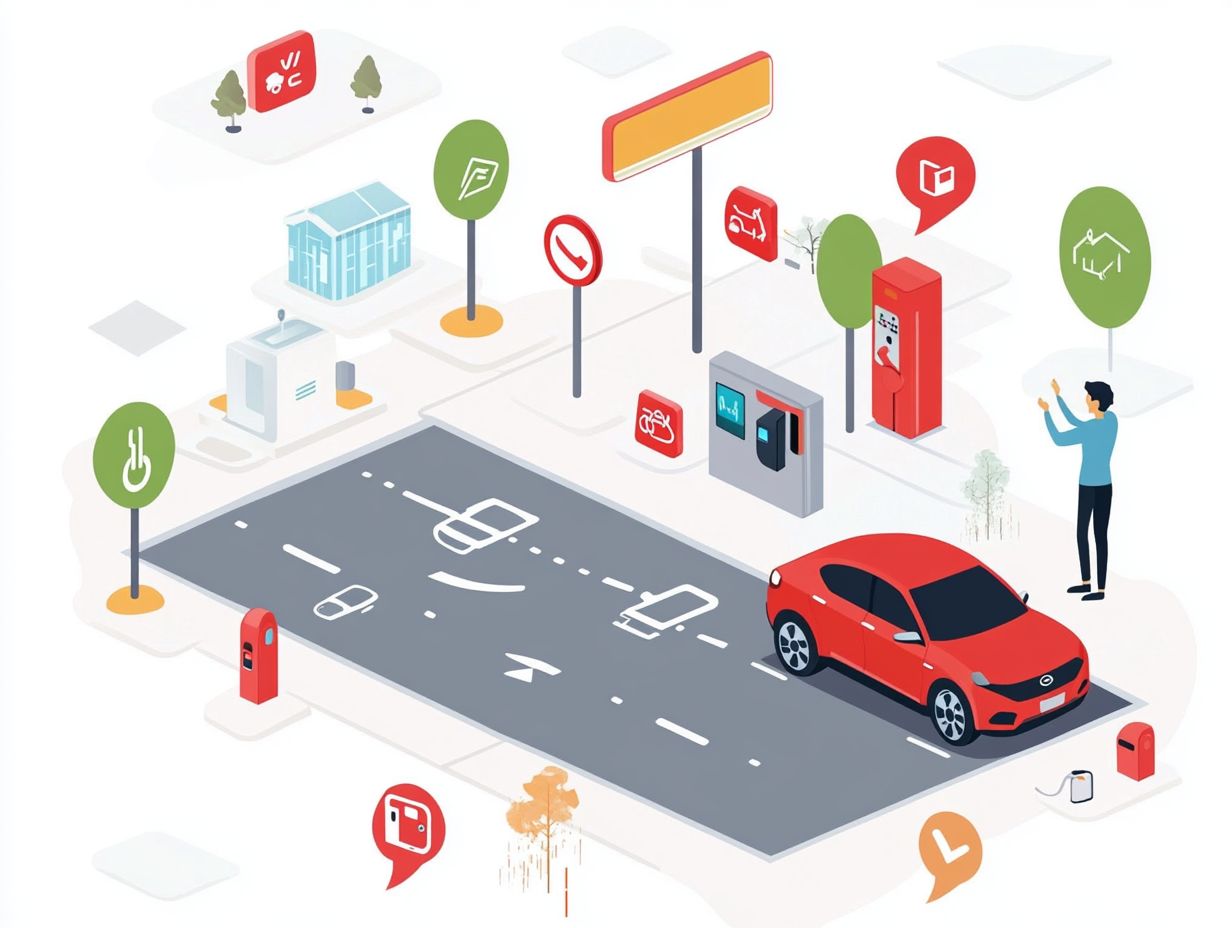
An EV charging station map shows the locations of electric vehicle charging stations. It helps you find nearby charging stations for electric cars.
How do I access an EV charging station map?
Get excited! You can easily find an EV charging station map on mobile apps, websites, or even right in your car’s navigation system. Some electric vehicle manufacturers also provide their own charging station maps.
What information can I find on an EV charging station map?
An EV charging station map typically displays the location of charging stations, the types of chargers available, and the availability of each charger. It may also show the cost of charging and any amenities offered at the station.
How do I read an EV charging station map?
To read an EV charging station map, start by finding your current location. Then, look for nearby charging stations and their corresponding icons. For detailed guidance, check out how to locate EV charging stations near you, where you can click on each icon to view more information about the charging station.
Can I filter the results on an EV charging station map?
Yes! Most EV charging station maps allow you to filter results based on different criteria like charger type, payment methods, and amenities. This helps you find the most suitable charging station for your needs.
Are all EV charging station maps accurate and up-to-date?
While EV charging station maps strive for accuracy, discrepancies can occur due to changes in station availability or new installations. It’s always wise to double-check the information with the station owner or operator before heading to a specific location.

